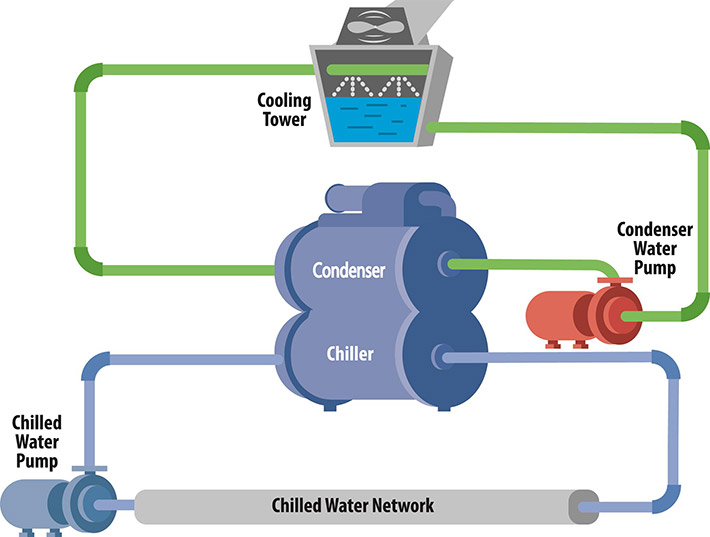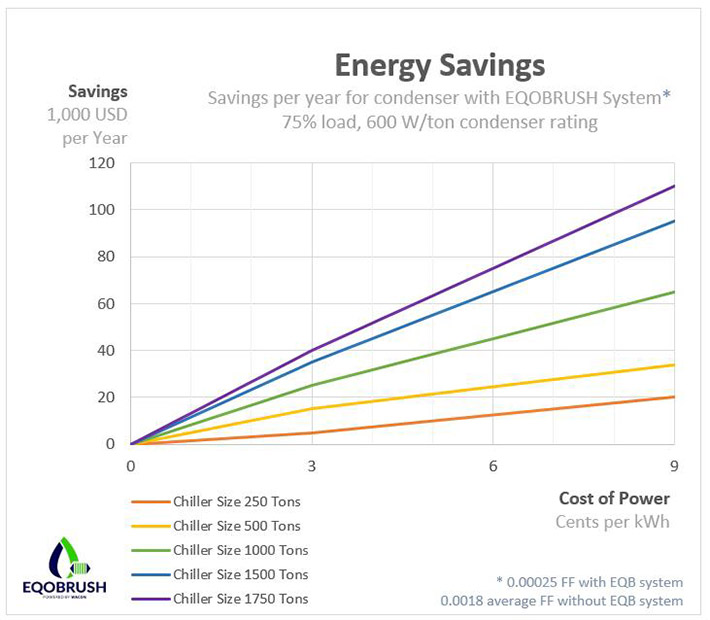- Main
- Chiller Efficiency
- Auto Tube Brushing
- Cooling towers
- Motorless Turbine
- Contact Us




“Chillers are the single largest energy-using component in most facilities and can typically consume over 50 percent of the electrical usage. Chillers use approximately 20 percent of the total electrical power generated in North America, and the U.S. Department of Energy estimates that chillers expend up to 30 percent in additional energy through inefficiency.”
It’s a basic refrigerant system with an evaporator and a condenser, just like those that can be found in a split unit aircon or any refrigerator. The chiller condenser is (probably) water-cooled via the connection to the cooling tower.
The downside of the water-cooled air-conditioning system is the pollution and scaling that the cooling tower water brings into the condenser, and that slowly impacts performance and energy efficiency. A polluted condenser can run at a rate that is 20-40% less efficient, or in other words, a chiller with a polluted condenser takes 20-40% more electricity per cooling unit.
The result of the progressing buildup of scaling and fouling is unacceptably low performance causing complaints about the indoor climate.
To avoid this happening, the chief engineer will arrange a regular interruption via your service contractor. The condenser is opened up and the build-up from the tubes is removed by mechanical or chemical cleaning.

However, a lot of energy is wasted due to fouling between cleaning interruptions. This energy waste can easily be halted by installing an on-line cleaning system that keeps the condenser tubes clean during operation and keeps the energy consumption per cooling unit (RT) at the lowest possible rate, 365 days per year.

The system’s operational principal is simple. A flow reversal valve is installed between the cooling tower and the chiller. Brushes with catch baskets are installed on each tube inside the chiller. By reversing the water flow over the chiller briefly at regular (4-hour) intervals, the brushes travel up and down through the tube, removing all sediments and sending them to the cooling tower.

Assuming an energy saving of about 15% on the chillers’ electricity consumption, the annual savings can be easily calculated. In most cases, the payback period for the EQOBRUSH (that can be retrofitted onto most chillers that you may have in operation) is less than a year, which makes this an investment that fits in any cost and/or energy saving program.

I love your blog.this all provided knowledge are unique than other cooling blog.
Efficient Building Management with Automatic Chiller Cleaning are good explain.
keep updating